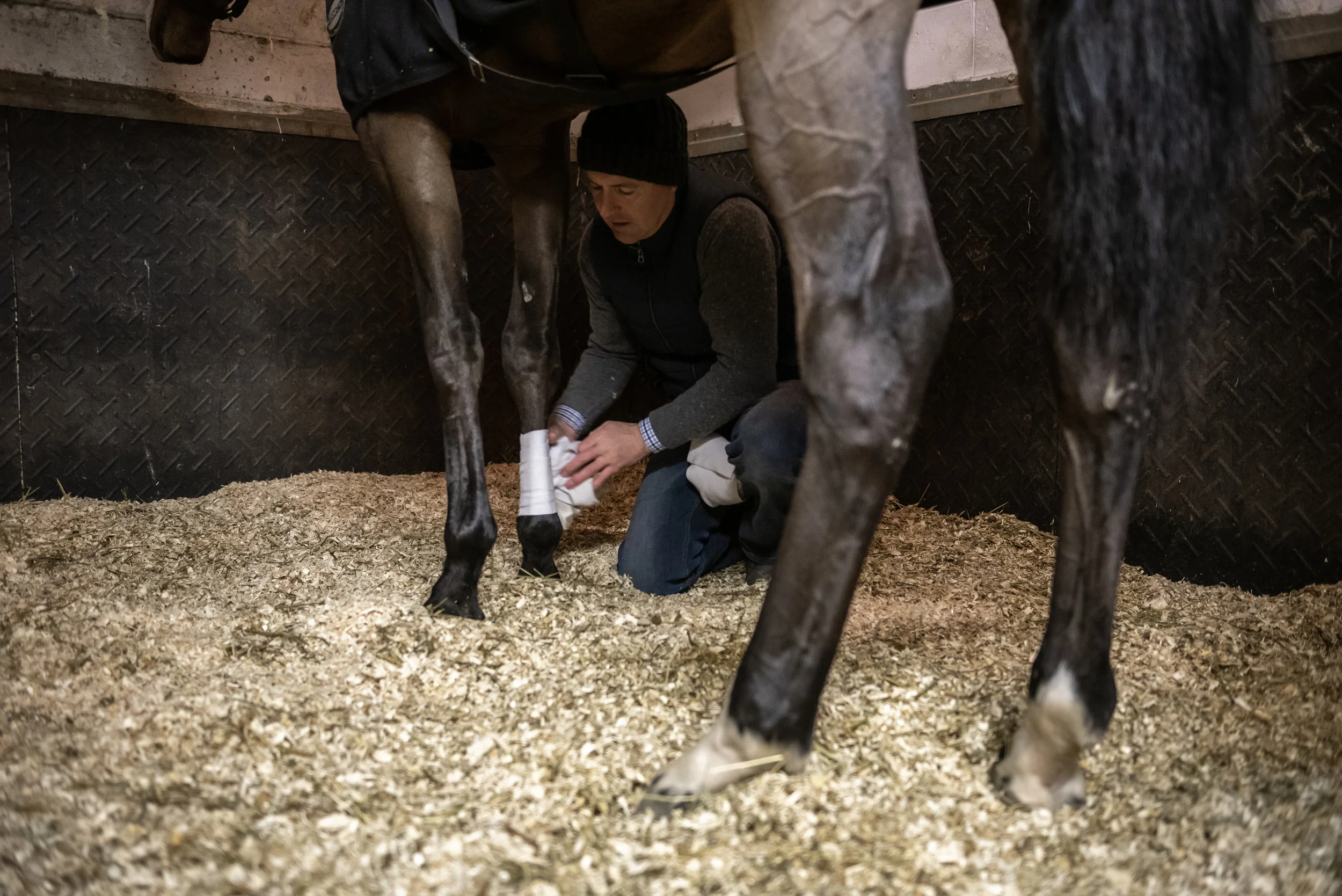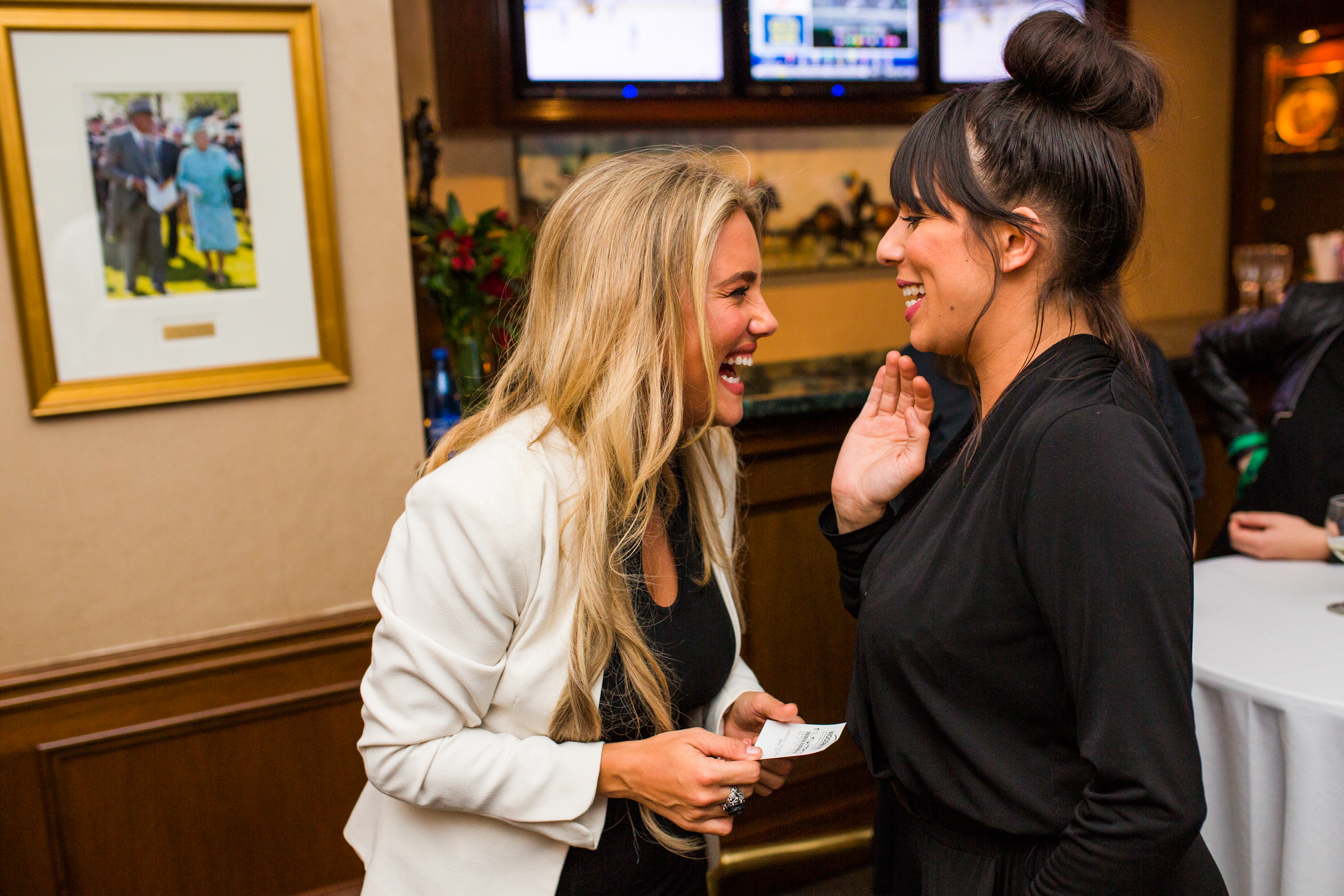Niall Collum - Canadian trainer profile
By Alex Campbell
Trainer Niall Collum brings plenty of experience at the highest level of international racing to his training program. The 46-year-old native of Clonmel, Ireland, now based at Woodbine Racetrack in Toronto, Canada, has worked for major European operations Coolmore and Godolphin, and has traveled with their horses to some of the biggest races in the world, including the Breeders’ Cup, the Melbourne Cup, and races in Dubai, Hong Kong, and Japan.
His journey in the sport of horse racing started off when he was a 12-year-old in Ireland, riding horses at a pony camp. At 14, Collum got his first job in racing as a work rider for Irish trainer Pat Flynn. Collum not only rode horses in the mornings during training but also performed work around Flynn’s yard. It was that first job that kicked off Collum’s now more than 30-year racing career.
“I was offered a job for the summer with Pat Flynn, and I ended up staying there,” Collum said. “I didn’t go back to school and stuck with the horses to my parents’ horror. Back then, it was different too because we did everything. We rode out and we mucked out. You didn’t just ride the horses and go home. We’d have to do everything first hand.”
Collum had aspirations to be a flat jockey, but eventually grew to a point where that career wasn’t going to be possible. Although the flats weren’t an option, Collum continued working with Flynn for a little while longer before making a move to England to pursue a career as a steeplechase jockey.
“A guy who I knew said I would do very well to go to England,” Collum said. “I went to Toby Balding in England. He was a big jump trainer at the time. He said if I put my head down and worked hard, I’d get on there, which I did. I rode a nice few winners for him over the jumps. I rode my winners and everything, but things weren’t really taking off for me.”
Collum returned to Ireland and flat racing, joining Aidan O’Brien’s stable as a work rider. Collum knew O’Brien after spending some time working for O’Brien’s father-in-law, Joe Crowley, and worked with O’Brien and horses owned by Coolmore at Ballydoyle.
“I went back to him and spent five years there working with the best horses in the world and got to travel the world to all the big races,” Collum said. “It was a great experience, and I loved every bit of it.”
Collum spent five years working with O’Brien before looking for his next opportunity. This time, it was Godolphin who was expanding its operations, and Collum took the chance to work with them in both the United Kingdom and Dubai.
“After five years, you’re looking for something to freshen up, and the opportunity came up with Godolphin to go to Dubai,” Collum said. “They were getting big at the time. I got offered the job to go with them, and I did. We would spend the winters in Dubai and the summers in England. I think it was the best thing I ever did to be honest with you because it opened up a whole new world for me.”
Collum was once again a work rider with Godolphin, but his connections in Dubai and his prior experiences in Ireland would help him get into training. Collum worked for Godolphin for six years before making the switch to training and caught on with Eddie Kenneally, serving as an assistant trainer at Belmont Park in New York. He worked for Kenneally for a year before deciding it was time to go off on his own. Collum set up a racing syndicate and purchased horses to train, but ran into an immigration issue that would throw his career into turmoil.
Collum had traveled with his then girlfriend and now wife, Andrea Dube-Collum, to Montreal, Canada for a weekend getaway. Following the trip, Collum was denied entry upon his return to the United States, putting his syndicate in jeopardy.
TO READ MORE —
BUY THIS ISSUE IN PRINT OR DOWNLOAD -
Triple Crown 2019, issue 52 (PRINT)
$6.95
Triple Crown 2019, issue 52 (DOWNLOAD)
$3.99
WHY NOT SUBSCRIBE?
DON'T MISS OUT AND SUBSCRIBE TO RECEIVE THE NEXT FOUR ISSUES!
Print & Online Subscription
From $24.95
In conversation with Jim Lawson - Mr Woodbine
By Giles Anderson
Jim Lawson has literally grown up with Woodbine Racetrack, he was born in the same year that the track opened in 1956. Today Lawson assumes the roles of CEO of Woodbine Entertainment Group, Chairman of Ontario Racing, as well as chairing the board of governors of the Canadian Football League. He recently sat down with Giles Anderson to discuss the future direction and goals for racing and the Woodbine facility in the years to come.
It would be fair to say that you came to racing through a sporting injury and looking back your career may have well evolved on ice.
Yes, I played US College Hockey at Brown University in Rhode Island. By 1978 I was drafted by the Montreal Canadiens. I left school early, I had enough credits to graduate but had an injury-prone two and a half years in their organisation, with many issues. Ultimately, I retired and went to law school, and when I went to law school, like a lot of people, I thought ‘wouldn't it be great if I could do sports law, or be a player agent, or whatever?’ And of course you soon realise that you need that foundation of law and legal contracts, so I ended up doing commercial law for the most part.
So here I am, 30 years later, being in a position where I am with the Canadian Football League. Even though I was a hockey player, I always had a passion regarding football and horse racing. My dad had Thoroughbred horses from the time I was six or seven years old, so I used to come out here 1965, 1966, when I was 10 years old. He ran a modest stable, but a successful stable. He was a great student of the game and I think he won 67 stakes races here with a very modest stable over the years and he's in the Canadian Horse Racing Hall of Fame.
So I spent my early years around Woodbine and also studying bloodlines.
So how did you end up working for Woodbine?
Mostly because of the clients through my work at a major downtown Toronto law firm and as I'd spent a lot time around Woodbine, the board was aware of me. They initially asked me to come on the board to look after the 700 acres of land that they had here. So I joined the board and then I evolved into being chairman of the board in 2012.
Then in 2015, when the CEO stepped down, the board asked me to step in and, here I am. I've gone from chairman to CEO here now, but I have a big background, as I said, in horse racing and a big part of what we're doing today is real estate development.
How many teams make up the Canadian Football League?
There are nine teams. We're looking to expand it, Halifax to be a tenth team, but there are currently five teams in the west and four teams in the east. Montreal, and Toronto, and Hamilton and Ottawa and as I said, potentially an expansion team in Halifax, so a lot of teams across the country.
“THE BIGGEST CHALLENGE WE HAVE IS TWO-FOLD AND THEY’RE RELATED. AND THAT IS AN AGEING DEMOGRAPHIC IN BOTH SPORTS.”
Why do you think has there not been as much expansion in the last five years as much as there has been of teams in soccer?
Well, that's a good question. In football, the biggest, I think, single achievement is the renewal of capital investment in the stadiums, which has been a big plus. There's been a completely renovated stadium in Toronto, a brand new stadium in Hamilton, a completely renovated stadium in Ottawa, a new stadium in Saskatchewan, a new stadium in Winnipeg. So the biggest achievement, I think, is the reinvestment of capital to keep the league in good shape in the sense that it's very much a gate-driven league as opposed to many other sports, which are television revenue driven. We do have the television contract with TSN and we have good ratings on the sports network, which is a Bell Globe Media property. But I think the biggest thing that the league has done is reinvested itself and set itself up for a strong future.
Do you see a big crossover from what you’ve learned about football into racing?
The biggest challenge we have is two-fold and they're related. And that is an ageing demographic in both sports. Our core customer is probably that 50-year-old to 70-year-old male. I think we're doing a good job in horse racing because of our food and beverage experience and the cost of having a good experience here. We're making great strides in bringing up that younger customer. But our real core wagering customer fits in that 50 to 70-year-old demographic.
Woodbine’s vision for the future
The same is true in the Canadian Football League, it may well be true in the golf world and the tennis world, and so that is a real challenge to see and it is actually of interest for me to see how both organizations from the marketing partnerships approach that. And then secondly the challenge in both sports has been the consumption of the sport and what I mean is that the Canadian Football League is a gate-driven league, while in order to get people interested in horseracing, you really need to get them here and see the horses and feel the horses and just the excitement.
In both cases now, in a large part on the football side the evolution, it's not just overnight, it's the last 15, 20, 25 years depending on your measure of the large screen TVs that sit in everyone's den or family room. People want to consume sports in luxury, and television has done a great job with production, with slow motion and replays and analysis and making that television experience so great, so that a lot of people would rather than sitting out in colder weather, they'd rather sit in home in the comforts of their den or family room, watching television on a big screen TV. The same thing for horse racing, really. We have, for business purposes, made it very accessible to wager on horse racing through the internet. People don't have to come out here any more and that's a challenge.
So we've got a couple of sports there where, because of technological advances and just raising the level the game of how we distribute our content in both cases, you're challenged in terms of getting people interested. People are only going to invest in horses if they are out here and they get the excitement of the game. We need new owners, we need new breeders and you're not going to get that from people who are gambling over the internet, you're going to get that from people who come out here and say, "Wow, I love this, wouldn't it be fun to own a horse."
And the same with football, you need to get them out to the game to experience it and meet the players and see the players. One of the challenges with football, especially in Canada with so many sports coming - soccer has grown huge, or European football, shall we say - I think that one of the things we need to do with football is to get youth playing it and the likelihood of that happening is if they can get out to the games and feel the excitement, and watch it and meet the players.
TO READ MORE —
BUY THIS ISSUE IN PRINT OR DOWNLOAD -
Breeders’ Cup 2018, issue 50 (PRINT)
$6.95
Pre Breeders’ Cup 2018, issue 50 (DOWNLOAD)
$3.99
WHY NOT SUBSCRIBE?
DON'T MISS OUT AND SUBSCRIBE TO RECEIVE THE NEXT FOUR ISSUES!
Print & Online Subscription
$24.95







